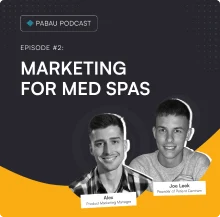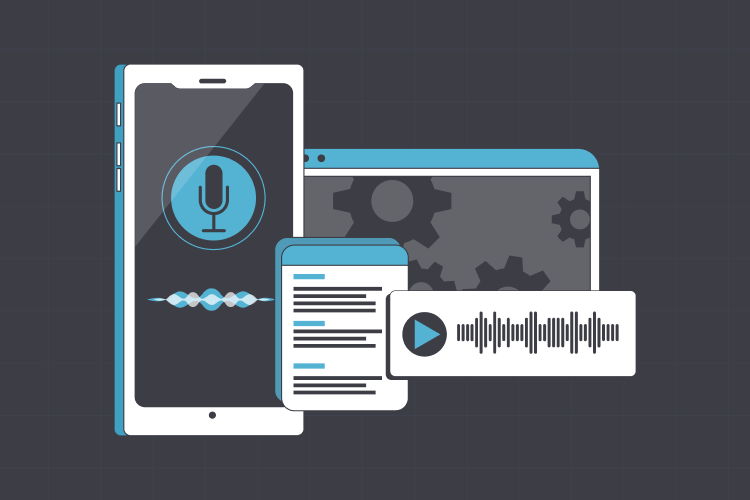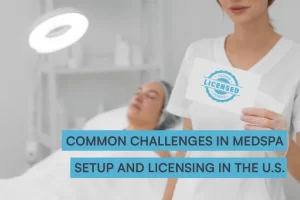Speech recognition technology in healthcare is on the rise, and medical dictation tools are leading the pack. Speech recognition, like dictation, is not a brand-new feature — it has been around for a while now, with 62% of healthcare practitioners already using it in their EHR.
If you are among the 38% of practices that have not leveraged dictation tools yet, you might be missing out on a some real gems — like more efficient patient communication and the ability to promptly respond to patient needs.
Medical dictation tools are the biggest ace up your practice’s sleeve 💪 They can help you make the most of those short minutes between appointments and capture any details that may be lost if you don’t have time to write them straight away. You can also maximize patient appointments by sharing real-time notes — and recording them as you speak.
Think about it.
How many patient notes have you typed and typed in your system today? How many of those typed notes did you have to additionally update, and resend? How many of them have you forgotten to include in your textual notes?
Lingering communication issues like these can easily leave your patients uninformed of what to do next, strain your staff, and waste your time. And in the game of offering stellar patient care, wasting time is enemy number one.
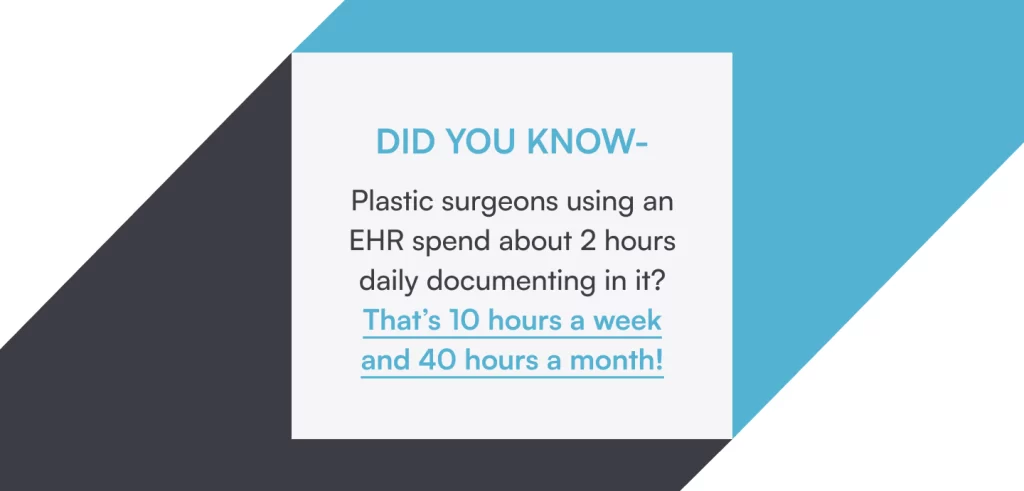
Imagine what else you could be doing with those 40 hours you spent on documenting. Like, everything? Yes, you really could.
Speaking is 3 times faster than typing or clicking — and dictation tools are the missing link that keeps all your medical information in one place, transcribed accurately, and ready for use. It’s also reliable and secure, and user-friendly.
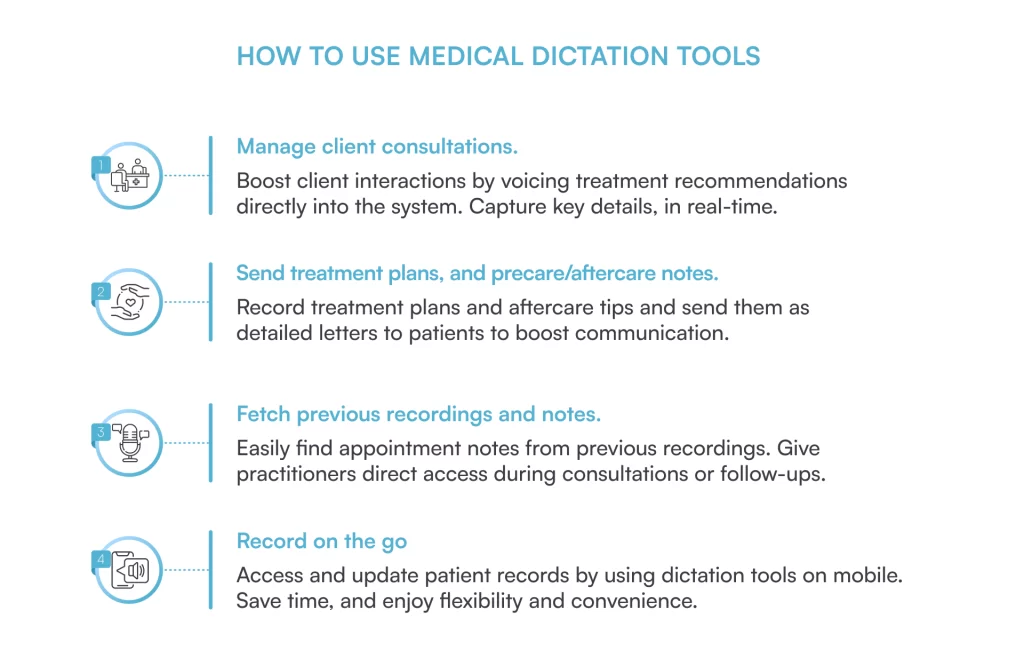
Dictation works both for you and alongside you. It works so well, in fact, that we wrote a whole blog about it. Jump right in as we share the 5 biggest advantages of medical dictation tools — alongside useful expert tips and some practical examples to get you started.
👉 Already familiar with the feature? Skip directly to our video guide to learn how Pabau’s integrated medical dictation tool can help your practice boost efficiency, save time and money, and improve patient treatments onward.
Medical dictation tools — an introduction
If you’re new to medical dictation, you might wonder, is it just like using a tape recorder? While that’s a reasonable assumption, digital tape recorders are a bit outdated devices, different from the features of modern medical dictation.
In contrast to standalone recorders, medical dictation tools can seamlessly integrate into various medical software. They also go beyond mere recording by incorporating transcription functionalities that precisely convert your audio notes into text.
You can use dictation tools to generate medical note transcripts that can be instantly shared with patients, without needing extra technologies. You can also gain direct access to all your recordings in one centralized location within your software, typically the client card.
This lets you easily manage patient notes and simplify information sharing with both patients and team members.
When dictation meets OpenAI…
Many dictation features are quite straightforward, offering speech-to-text functionalities only. But, many recent dictation tools are now equipped with AI functionalities, such as OpenAI. This helps fetch faster and more accurate details regarding patient treatments and care.
Thanks to text-to-speech OpenAI functionalities, dictation tools can pick up medical terminology quite literally. This allows practices to transcribe recordings word for word, without leaving key information out. You can save voice notes for your team to use, or convert audible notes into letters, and e-sign them before sending them to patients.
OpenAI can adopt the style of your bespoke letter templates, too. So when you convert your audio notes into text, OpenAI will automatically follow any of your preferred letter templates to make the content more recognizable to your brand.
This not only helps you provide more branded and timelier care for patients, but it also improves clinic communication and rids you of constant typing and double-checking.
How to properly use medical dictation tools?
Medical dictation is all about speaking your medical notes — whether it’s treatment details or follow-up advice — into an integrated system recorder. Getting started is easy, you only need your device’s microphone and speak into it – that’s all there is to it!
Because medical dictation is user-friendly, it requires no specialized skills to manage it.
With just a few hours of training, every employee can learn to navigate dictation swiftly, eliminating the need for hiring external scribes or using extra transcription software.
This not only saves you more money but also streamlines your record-keeping, making treatment information accessible to the practitioner who needs it.
Once you’ve voiced your insights, the software works its magic. It instantly saves your dictation as an audio file and transcribes it into text. Your recordings will be seamlessly stored in the software, ready for edits, updates, or e-signing — before they’re shared!
Need to fine-tune your audio recordings? No problem. You can also pause the recording, make adjustments, and edit the transcript before sending it. Simple and quick does it!
Medical dictation and speech-to-text tools — who are they for?
Care providers from any field can use medical dictation tools, including:
- Medical spas and aesthetics practices
- Nurses, beauty practitioners, and doctors
- Acupuncturists and physiotherapists
- Dentists and wellness centers
- Hospitals and GPs
- Physical therapy practices
- Psychology and psychiatry
A Stanford research paper found that speech is three times faster than typing. So, if you’re a busy practice with piles of documentation to organize, recording patient notes — rather than typing them — will help you provide faster and detailed insights into patient journeys.
You can offer more valuable and coordinated patient care, including all the relevant details patients need to know about their treatment or care.
But wait, there's more...
Medical dictation also reduces the need for hefty record-keeping. You’ll cut down the time you spend on admin work and give your patients your undivided attention — without having to glance at your computer every time they visit.
For every private practice that’s looking to upgrade, medical dictation is a no-brainer. When you have more time, you can see more patients during the day. This both brings more revenue to your practice and reduces multitasking.
What can medical dictation tools be used for?
Several scenarios can be at play here, depending on what you need dictation for.
Some practitioners, like aesthetic surgeons, prefer medical dictation during back-to-back consultations. Instead of doing it after the patient leaves, surgeons can dictate the patient’s concerns or propose a treatment plan — during the appointment.
Other practitioners, like physical therapists, might use medical dictation following a patient’s visit, as a way to record their subjective and medical findings, or include aftercare tips, without having to jot them down on paper or type them in a computer.
Recording your spoken notes helps you tend to patients actively, without any disruptions or the need to refer to a computer. If you are seeing several patients in a row, and don’t have time to take notes after each visit, medical dictation will help you ‘think out loud’ and gather everything you have said in one place — in both audio and text format.
Dictating a patient’s assessment in their presence benefits your patient engagement efforts, too. Patients will appreciate that their practitioner accurately captured every word they said, which will grow their satisfaction and engagement down the line.
5 benefits of using medical dictation in your private practice
Medical dictation software tools are highly favored by busy practitioners, and here’s why:
- Improved patient care and treatment outcomes
- Increased productivity and efficiency
- Fewer costs & more accuracy
- Clear & readily accessible information
- Patient data security
Let’s have a look at each of these advantages separately and see how each can click for your practice’s needs.
1. Improved patient care and treatment outcomes
When a patient arrives for a consultation, for example, the last thing you should be doing silently typing away on a computer. This can easily hinder effective patient communication and might make them think their concerns aren’t being given enough attention, impacting the overall quality of care.
Dictation tools clear the air for you. They can help elevate patient care by giving you more time for direct patient interactions. Instead of clicking around and wasting time looking at your computer screen, you can focus on the patient, maintaining eye contact and sharing active communication — while recording it at the same time.
Patients can hear everything you say 👌 which enables greater trust and leads to better patient outcomes. Getting accurate and comprehensive audio notes can also ensure better treatment guidance, and emphasize the importance of patient safety and well-being.
2. Increased productivity and efficiency
When patients come in for appointments, practitioners might struggle to balance their time. Of course, every practitioner wants to give good care while also giving relevant treatment progress notes. But, should you focus on the patient first and take notes later? Or do you leave the patient waiting while you write everything down on your computer?
With dictation, you don’t need to worry about either of these things — you can do both.
Dictation is the easiest way to include relevant treatment information for the patient without sacrificing your quality of care. Instead of having to scramble notes quickly before your next appointment, dictation helps you run a more well-oiled machine, especially when you’re not running late due to writing down notes.
Integrated dictation gets you accurate and detailed records, processed in seconds. All audio notes will be automatically saved and instantly transcribed into a letter format, which you can then review, edit, and e-sign before sharing with patients.
By eliminating the need for extra transcription services, you can also cut operational costs at your practice and save your receptionists from having to do hefty admin work.
3. Fewer costs and more accuracy
46.7% of practices in the US are private businesses covering expenses on their own. To run a successful business, ensuring low costs is paramount for private practices.
And here’s the thing. Using independent speech-to-text software can set practices back around $150 a year, racking up costs quickly. Turning to free dictation software like Google Docs Voice Typing might seem like the next best option. But here’s the catch — free dictation tools are not entirely accurate or secure, and can easily put sensitive patient data at risk of breaches. Plus, using a separate dictation tool from your medical software means more juggling between systems, and wasting more money and time.
If you want to save both, consider using a medical dictation tool that’s already integrated into your practice management software. For example, Pabau’s integrated dictation feature is included in your plan at no extra cost — you can reap the benefits without the hassle or additional expenses.
In a nutshell, medical dictation saves your practice money by saving you time. Dictation can accurately operate in the background, while you can focus on the core aspect of your job — quality patient care.
4. Clear and readily accessible information
Ever had a situation where patients missed crucial details during their appointment or struggled to understand your typed notes afterward?
Well, dictation helps eliminate this confusion with added accuracy. After recording your patient notes, they will be immediately transcribed into word-for-word letters, which can enhance patient understanding. You can transcribe and send a letter to your patient directly after your consultation, with everything you discussed, so they can easily refer to it.
Forgot to include a note? No worries — you can easily find saved audio transcripts in your system and send patients an updated letter of your notes. That’s the beauty of dictated notes — they are both accurate and readily accessible when you need them.
Most devices nowadays support voice-to-text features 📱💻 You only need a working microphone and speakers to deliver information promptly and whenever needed — without any hassle.
5. Multi-layer patient data security
Patient privacy should remain a top concern for clinical staff, particularly in an era where Protected Health Information (PHI) is a prime target for cyber threats.
Many platforms may offer dictation tools, but not all of them can secure this information. For example, despite being popular, platforms like Siri and WhatsApp lack the required encryption to safeguard recorded data. They are also not as accurate when transcribing recorded information and cannot support HIPAA compliance. This issue that can easily put you up against severe HIPAA violations and fines.
Having a dictation tool built into a system makes it more secure, especially when it can support your HIPAA compliance. You can streamline documentation processes and have peace of mind, knowing that all sensitive information you record remains secure and compliant with HIPAA standards.
You also won’t have to transfer information between different, and often unsafe, systems — and can limit the people who can access your recordings via permissions.
The great thing about integrated dictation features is that it will store all your recordings and letters directly in the client card. This way, you won’t have to keep them in random desktop folders or worry if this information can be breached.
👉 Learn more about HIPAA compliance and the common myths surrounding it with our detailed guide!
How experts are using medical dictation tools —
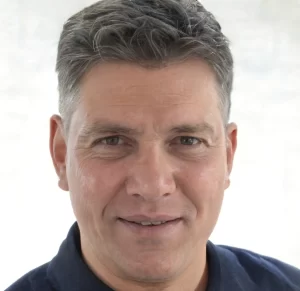
Aidan Matthews
Spa therapist & owner of The Old Hammam & Spa
👉 Aidan Matthews is a spa therapist and owner of The Old Hammam & Spa.
As a long-time medi-aesthetics professional, he provides detailed insights into how dictation features integrated within a software can benefit medi-aesthetics and beauty clinics —
For client consultations:
“Dictation features can be invaluable during client consultations. Instead of manually jotting down notes, therapists can speak their observations and recommendations into the CRM. This allows for a more natural and focused interaction with the client while ensuring accurate and detailed records.”
For treatment plans and progress notes:
“Recording treatment plans and progress notes verbally can enhance accuracy and save time. Therapists can dictate details about specific treatments, products used, and client responses. This not only streamlines documentation but also ensures that comprehensive and consistent information is captured for each client.”
For appointment scheduling and follow-ups:
“Therapists can use voice dictation to schedule appointments seamlessly. Additionally, they can dictate follow-up instructions or post-treatment care recommendations, which can be automatically transcribed and sent to clients. This improves communication and helps clients adhere to post-treatment guidelines.”
He also notes how OpenAI can help with voice-to-text features —
“OpenAI’s advanced language models, such as GPT-3.5, can be integrated into CRM systems to provide accurate and efficient voice-to-text capabilities. By leveraging OpenAI’s technology, beauty clinics can enhance the dictation feature within their software, ensuring clear and precise transcriptions of verbal inputs.”
“Integrating dictation features supported by OpenAI’s technology can significantly enhance the efficiency of medi-aesthetics and beauty clinics by facilitating seamless documentation, improving communication, and contributing to a more organized and effective overall workflow.”
See medical dictation tools in action with Pabau!
Never let your thoughts go unrecorded again – Pabau has your back. Our integrated medical dictation feature allows you to create accurate and detailed audios, covering everything from notes and treatment instructions to pre-care and aftercare guidelines.
What’s more, our refined transcription feature transforms your audio notes into finely tuned letters. You can electronically sign, update as needed, and instantly share them with patients for maximum transparency and quality care. Most of all, you’ll be able to store everything in the client card, for secure and easy retrieval.
Witness Pabau in action 👀 — watch our step-by-step video guide 👇 and learn how our medical dictation can help your practice save time, and scale efficiently!
